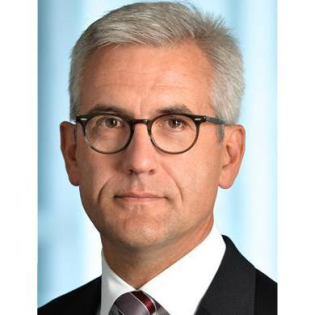A tale of the business state of two industrial technology supplier companies–GE and ABB.
This is a great article tracing the heritage and woes of GE. While the company is still strong in all the basic industrial categories, it’s moves deeper in to financial and entertainment industries have cost it dearly. Not to mention decades of financial sleight-of-hand. When I was at Minds + Machines last fall, I wondered if this might be the last. The new CEO hinted at changes in GE Digital at the conference. Shortly afterwards, the shoe dropped. GE Digital was to be essentially gutted. No more grandiose plans for a huge software platform that would be the solution of everything digital. Smaller applications and partnerships were to be the new direction. There will be some GE people at ARC this week, I’ll see what else I can learn.
Meanwhile, ABB released its full year 2017 financial results. It has been in the midst of restructuring since Ulrich Spiesshofer assumed the reins in 2013 succeeding GE alum Joe Hogan. ABB touts its progress in this report.

Ulrich Spiesshofer, ABB CEO
“In the transition year 2017, we shaped a streamlined and strengthened ABB. Now, our digital-first portfolio for customers in utilities, industry and transport and infrastructure is based on two clear value propositions: bringing electricity from any power plant to any plug, and automating industries from natural resources to finished products,” said Spiesshofer. “The annual results include the dampening effect of our massive transformation. With our targeted actions to shift our center of gravity, we have improved competitiveness, addressed higher-growth segments and de-risked ABB. We delivered four consecutive quarters of increasing base-order growth. The momentum we have built in 2017 positions us for profitable growth as the global markets are improving. Today’s proposal to increase the dividend for the 9th consecutive year demonstrates our confidence in the future.”
Full-year 2017 Group Results
ABB delivered a steady financial performance in 2017 despite market headwinds and its ongoing transformation. Total orders were steady (steady in US dollars). Base-order growth (base orders are classified as orders below $15 million) showed increasing momentum each quarter, and for the full year increased 5 percent (6 percent in US dollars), mitigating the effect of lower large orders. The large order share of total orders in 2017 was 8.5 percent, versus 13.5 percent in 2016, in part as a consequence of ABB’s business model shift. Total service orders grew 8 percent (8 percent in US dollars) to 20 percent of total group orders.
The order backlog at the end of December 2017 was $22,414 million, 4 percent lower (2 percent in US dollars) compared with the prior year. The book-to-bill ratio2 was 0.97x for 2017, compared with 0.99x in 2016.
Revenues improved 1 percent (1 percent in US dollars) to $34,312 million, with positive contributions from Electrification Products and Robotics and Motion more than offsetting the declines in Industrial Automation and Power Grids. Total services revenues grew 3 percent (3 percent in US dollars) and now stand at 18 percent of total group revenues.
ABB executed on its Next Level strategy throughout 2017. The company launched ABB Ability, its digital solutions offering, and continued to invest in digital, sales, branding and research & development. It delivered strong cost savings in White Collar Productivity and supply chain/operational excellence and completed or announced a number of important transactions. It continued to de-risk its portfolio by divesting non-core businesses, and taking actions to implement its EPC (Engineering, Procurement and Construction) business model change. These activities impacted full year results. The company’s operational EBITA declined 2 percent (1 percent in US dollars) to $4,130 million, inclusive of approximately $140 million of charges related to the EPC businesses. The reported operational EBITA margin was 12.1 percent, 30 basis points lower due to charges related to the EPC businesses and would have been steady without these charges.
Net income in 2017 rose 17 percent compared with the previous year to $2,213 million, reflecting primarily lower transformation-related restructuring and restructuring-related expenses and net gains recorded on the business divestments in the year. Basic earnings per share grew 17 percent to $1.04. Operational EPS2 was $1.25, 1 percent lower in constant currency4
Cash flow from operating activities was steady compared with 2016 at $3,799 million for the full year. ABB continued to benefit from improvements in net working capital which generated approximately $600 million of cash during 2017. Net working capital as a percentage of revenue was reduced to 11.3 percent, a 10 basis point improvement year on year. Capital expenditures for the group were $949 million during 2017. Free cash flow of $2,926 million was 5 percent lower than 2016 and the company’s cash return on invested capital (CROI) was 12.4 percent2, mainly impacted by the acquisition of B&R.





